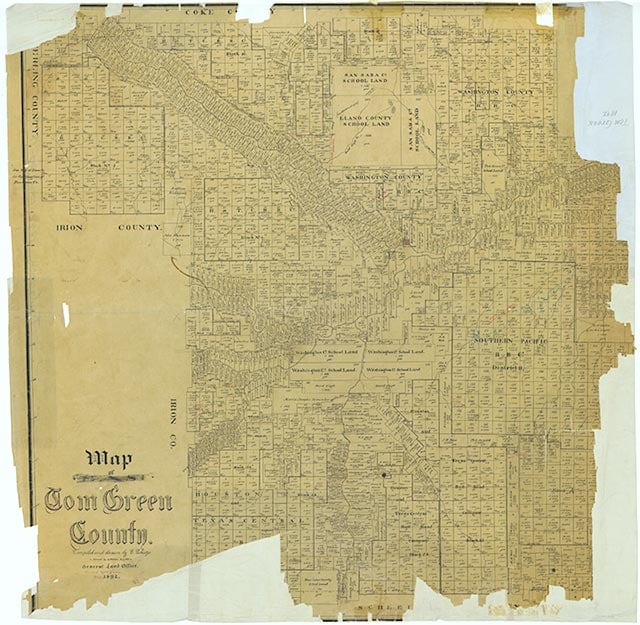Sanatorium

Sanatorium is in Tom Green County sixteen miles northwest of San Angelo on U.S. Highway 87. It was never an incorporated town, instead, it was a relatively self-sufficient tuberculosis sanatorium. The postmark "Sanatorium, Texas" began with the opening of a post office on the campus in 1919 and disappeared on October 7, 1965, when the post office closed. During the first decade of the twentieth century more than 4,000 deaths a year in Texas were attributed to pulmonary tuberculosis. In 1909 the Texas Senate passed a bill creating a TB colony, but it was defeated in the House. In 1911 both houses passed a bill creating two colonies—one for advanced and one for early cases—dedicated to the treatment and education of people infected with TB. Although plans for the former were abandoned, 330 acres were purchased near Carlsbad for the location of the Anti-Tuberculosis Colony No. 1. The first institution of its kind in Texas, the colony provided the isolation to calm the fears of the public, as well as rest and clean air, the only known cure for TB sufferers. Admission was restricted to patients between the ages of six and sixty for a period not to exceed six months. The fifty-seven-bed facility opened with a barbecue and celebration on July 4, 1912. Bascom Lynn, who commuted from San Angelo, was the first superintendent. In 1913 the facility was renamed the State Tuberculosis Sanatorium, and on January 1, 1914, Governor Oscar B. Colquitt appointed Joseph B. McKnight resident superintendent. Under McKnight's leadership the sanatorium expanded for the next thirty-five years. Attracting employees was difficult because of the fear of TB, low wages, and geographic isolation, therefore, the Sanatorium School for Nurses in Texas was organized in 1915 to train the needed staff. The two-year training focused on TB treatment, and nearly all the students were recovering TB patients. The first class of four graduated in 1917 with a R.T.N. degree (registered tuberculosis nurse). In 1920 administration of the sanatorium passed from the Anti-Tuberculosis Commission to the Board of Control.
By the 1930s the facility had treated more than 13,000 patients. From the original four buildings constructed at a cost of $10,000, the facility had grown to thirty-five buildings valued at $1.5 million. In 1930 there were thirteen buildings with 662 patient beds, including 162 beds in the children's Preventorium. The grounds had been expanded to nearly 1,000 acres and included a post office, library, barber shop, dairy, hog farm, butcher shop, bakery, power plant, laundry, printing press with its own newspaper (the Chaser), four water wells, and a school for the children. There were also church services and organized meetings for the Masons, Order of the Eastern Star, bridge club, sewing club, and stamp collectors' club. The complex had grown into a virtually independent community known as Sanatorium. By 1949 Sanatorium had grown to 970 beds with 300 patients on the waiting list. McKnight continued to propose expansions, including a new seventy-five bed dormitory, more employee living quarters, and a twenty-five bed surgery unit to supplement the existing surgical building constructed in 1947–48. Raymond F. Corpe, who was on loan from the United States Public Health Service, had begun to perform thoraco-plastic operations.
John C. Henderson | © TSHA

Adapted from the official Handbook of Texas, a state encyclopedia developed by Texas State Historical Association (TSHA). It is an authoritative source of trusted historical records.

- ✅ Adoption Status:
Belongs to
Sanatorium is part of or belongs to the following places:
Currently Exists
No
Place type
Sanatorium is classified as a Town
Location
Latitude: 31.61081600Longitude: -100.64894600
Has Post Office
No
Is Incorporated
No
